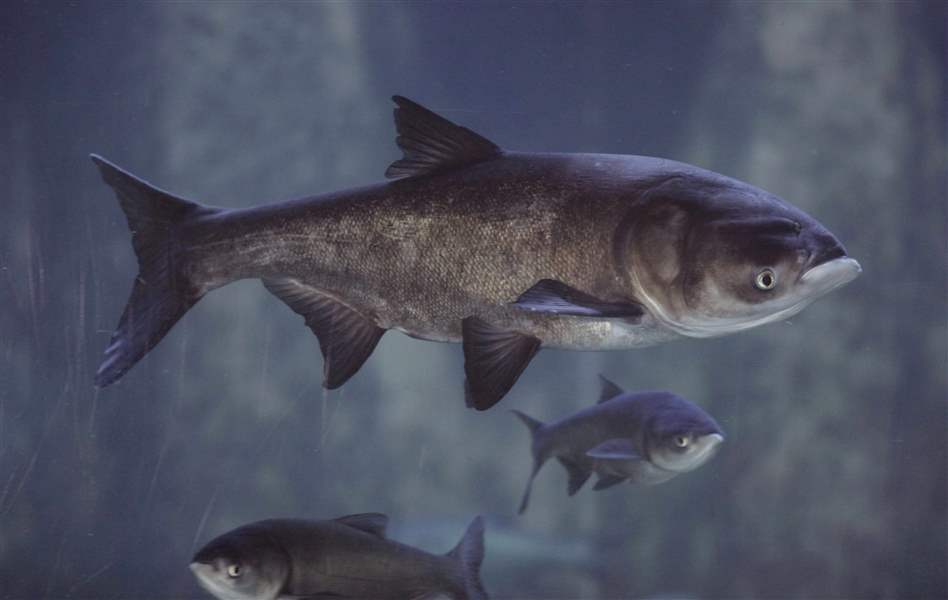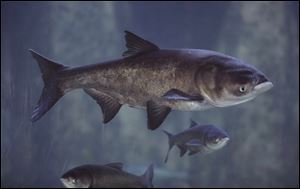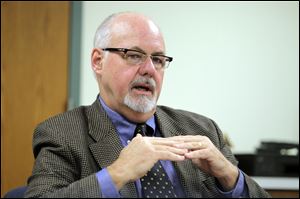
Regional Asian carp group discusses issue in Port Clinton
7/7/2011
Asian bighead carp, shown here at Shedd Aquarium in Chicago, are voracious eaters of plankton that biologists believe could starve out the fish that populate the Great Lakes.
ASSOCIATED PRESS

Asian bighead carp, shown here at Shedd Aquarium in Chicago, are voracious eaters of plankton that biologists believe could starve out the fish that populate the Great Lakes.
PORT CLINTON - The message from federal officials was clear: no Asian carp are known to have passed through the electric barriers designed to keep the invasive species out of the Great Lakes.
The message from those who make their living from Lake Erie and work to protect the natural resource was clear too: shut the door now between the Mississippi River and Lake Michigan watersheds near Chicago so the Asian carp cannot invade the lake.
“We don’t have a generation to study this. We don’t have that kind of time,” Rick Unger, president of the Lake Erie Charter Boat Association told state and federal officials at a meeting of the Asian Carp Regional Coordinating Committee in Port Clinton Thursday. “...We can’t afford to study this thing. The only reasonable answer is the permanent separation of Chicago shipping channel.”
Two species of Asian carp — voracious eaters of plankton that biologists believe could starve out the fish that populate the Great Lakes — escaped Arkansas fish hatcheries in 1993 and have been migrating northward for nearly two decades.

John Goss, who was appointed Asian carp czar by President Obama last September, attended the meeting in Port Clinton.
Among those in attendance at the committee’s quarterly meeting was John Goss, who was appointed Asian carp czar by President Obama last September. While he and others touted what has been done to stop the fish, those who work to protect the lake and those close to the region’s $7 billion a year fishing industry are clearly impatient.
“Ohio stands to lose a lot if Asian carp get into Lake Erie or even the Ohio River basin,” said Kristy Meyer, director of agricultural and clean water programs at the Ohio Environmental Council. “I suspect 40 years is a bit long when we know the only real solution is a separation of the two basins.”
Those comments followed presentations by officials from a variety of agencies involved in the Asian carp effort, including Brig. Gen. John W. Peabody, commander of the U.S. Army Corps of Engineers’ Great Lakes and Ohio River Division.
General Peabody said barrier systems, including a set of three electrical barriers southwest of Chicago, are the Corps’ primary tool to stop the movement of the Asian carp at this time. Long-term, permanent solutions, he said, will take “a generation or two to put into place” once studies are completed.
“It is clear that we have the Asian carp threat contained below the fish barrier,” he said. “All of the experts believe we are in a good place. We’re not resting on our laurels; we’re going to continue to attack this issue aggressively.”